Linsen Chen
Explore Spatio-temporal Aggregation for Insubstantial Object Detection: Benchmark Dataset and Baseline
Jun 23, 2022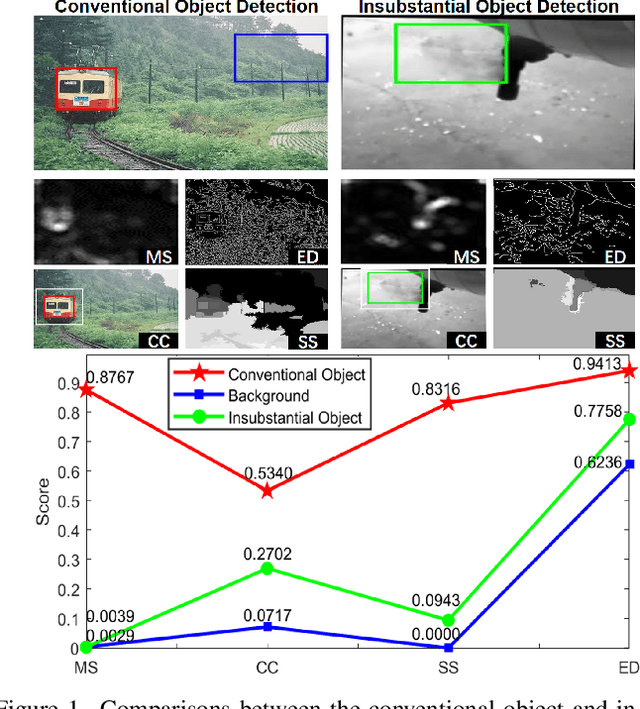

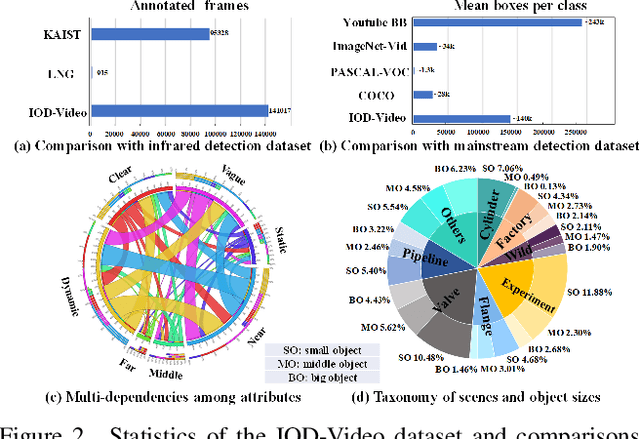
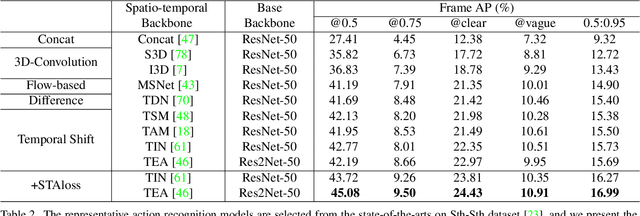
Abstract:We endeavor on a rarely explored task named Insubstantial Object Detection (IOD), which aims to localize the object with following characteristics: (1) amorphous shape with indistinct boundary; (2) similarity to surroundings; (3) absence in color. Accordingly, it is far more challenging to distinguish insubstantial objects in a single static frame and the collaborative representation of spatial and temporal information is crucial. Thus, we construct an IOD-Video dataset comprised of 600 videos (141,017 frames) covering various distances, sizes, visibility, and scenes captured by different spectral ranges. In addition, we develop a spatio-temporal aggregation framework for IOD, in which different backbones are deployed and a spatio-temporal aggregation loss (STAloss) is elaborately designed to leverage the consistency along the time axis. Experiments conducted on IOD-Video dataset demonstrate that spatio-temporal aggregation can significantly improve the performance of IOD. We hope our work will attract further researches into this valuable yet challenging task. The code will be available at: \url{https://github.com/CalayZhou/IOD-Video}.
Hyperspectral Image Semantic Segmentation in Cityscapes
Dec 18, 2020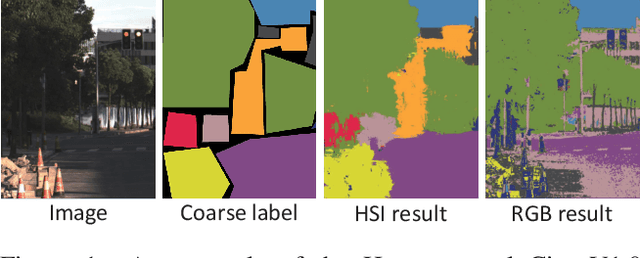

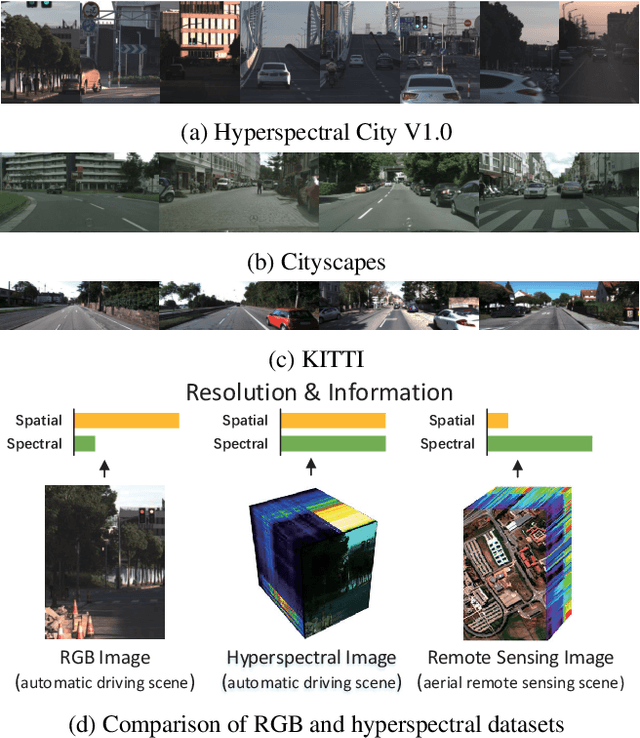

Abstract:High-resolution hyperspectral images (HSIs) contain the response of each pixel in different spectral bands, which can be used to effectively distinguish various objects in complex scenes. While HSI cameras have become low cost, algorithms based on it has not been well exploited. In this paper, we focus on a novel topic, semi-supervised semantic segmentation in cityscapes using HSIs.It is based on the idea that high-resolution HSIs in city scenes contain rich spectral information, which can be easily associated to semantics without manual labeling. Therefore, it enables low cost, highly reliable semantic segmentation in complex scenes.Specifically, in this paper, we introduce a semi-supervised HSI semantic segmentation network, which utilizes spectral information to improve the coarse labels to a finer degree.The experimental results show that our method can obtain highly competitive labels and even have higher edge fineness than artificial fine labels in some classes. At the same time, the results also show that the optimized labels can effectively improve the effect of semantic segmentation. The combination of HSIs and semantic segmentation proves that HSIs have great potential in high-level visual tasks.
Improving Multispectral Pedestrian Detection by Addressing Modality Imbalance Problems
Aug 17, 2020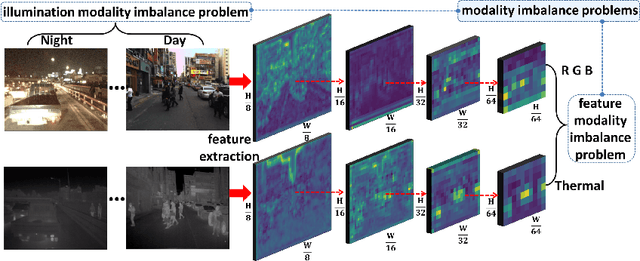
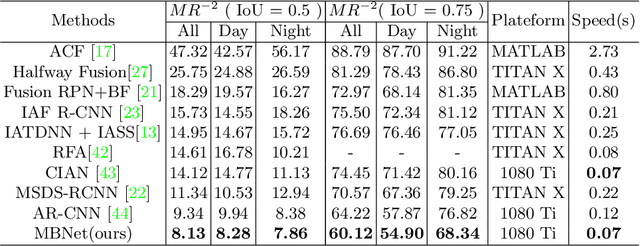
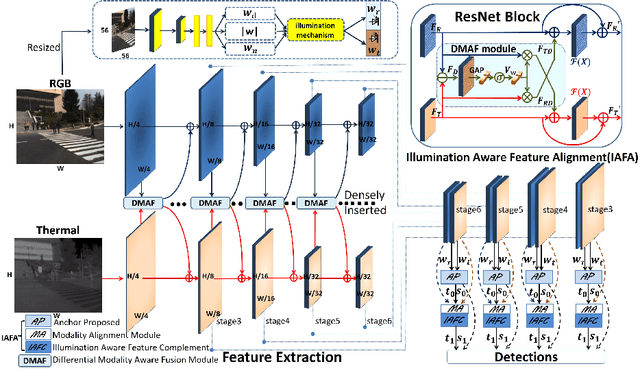
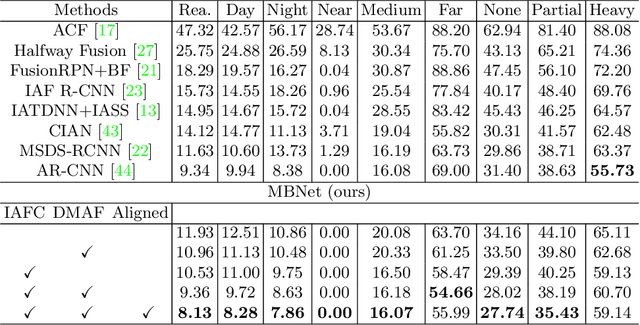
Abstract:Multispectral pedestrian detection is capable of adapting to insufficient illumination conditions by leveraging color-thermal modalities. On the other hand, it is still lacking of in-depth insights on how to fuse the two modalities effectively. Compared with traditional pedestrian detection, we find multispectral pedestrian detection suffers from modality imbalance problems which will hinder the optimization process of dual-modality network and depress the performance of detector. Inspired by this observation, we propose Modality Balance Network (MBNet) which facilitates the optimization process in a much more flexible and balanced manner. Firstly, we design a novel Differential Modality Aware Fusion (DMAF) module to make the two modalities complement each other. Secondly, an illumination aware feature alignment module selects complementary features according to the illumination conditions and aligns the two modality features adaptively. Extensive experimental results demonstrate MBNet outperforms the state-of-the-arts on both the challenging KAIST and CVC-14 multispectral pedestrian datasets in terms of the accuracy and the computational efficiency. Code is available at https://github.com/CalayZhou/MBNet.
Multispectral Image Intrinsic Decomposition via Low Rank Constraint
Feb 24, 2018



Abstract:Multispectral images contain many clues of surface characteristics of the objects, thus can be widely used in many computer vision tasks, e.g., recolorization and segmentation. However, due to the complex illumination and the geometry structure of natural scenes, the spectra curves of a same surface can look very different. In this paper, a Low Rank Multispectral Image Intrinsic Decomposition model (LRIID) is presented to decompose the shading and reflectance from a single multispectral image. We extend the Retinex model, which is proposed for RGB image intrinsic decomposition, for multispectral domain. Based on this, a low rank constraint is proposed to reduce the ill-posedness of the problem and make the algorithm solvable. A dataset of 12 images is given with the ground truth of shadings and reflectance, so that the objective evaluations can be conducted. The experiments demonstrate the effectiveness of proposed method.
 Add to Chrome
Add to Chrome Add to Firefox
Add to Firefox Add to Edge
Add to Edge